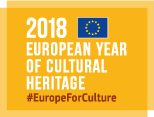HERACLES New mortars for restoration/consolidation
Challenge: WHY the innovation has been developed? What problem is addressed and why has not been not solved before?
Mortar is a workable paste used to bind building blocks such as stones, bricks, and concrete masonry units together, fill and seal the irregular gaps between them in masonry walls. Mortar characteristics play a very important role in masonry, including movement behavior, bond strength, and moisture movement. The mortar for restoration and reconstruction of wall portions must have adequate mechanical compressive strength, resulting chemically and mechanically compatible with the original mortar to avoid non-homogeneity. The mortar is particularly exposed to the action of the weather, therefore must be particularly resistant to weathering, ensuring high durability. It must have a strong water repellency to prevent water infiltration, be stable and resistant to cracking and have suitable mechanical strength. The challenge is to develop new mortars, with improved mechanical and weathering properties, but assuring the compatibility with the ancient materials present in the CH masonry.
Solution: WHAT the solution is about? HOW it goes beyond the state of the art?
In HERACLES two kinds of mortars have been developed: 1- a natural lime-based mortar for historical masonry walls: natural cement free lime-based mortar, for the restoration of historic buildings, with excellent mechanical and chemical compatibility with materials used in the past, with optimised porosity guaranteeing permeability to aqueous vapour, and low reaction to the disintegrating actions of the salts contained in the walls. Using natural binders, improved with nanometric particles, the pozzolanic activity has been improved. 2- a technical mortar expressly developed for the restoration/consolidation of old reinforced concrete structures, showing an advanced degradation state. It is reo-plastic, fiber-reinforced, and polymer-modified, formulated with high sulphate-resistant binders and selected sands, in a controlled granulometric curve. It presents high compressive strenght, adequate elastic modulus, very low presence of soluble chlorides, together with compensated hydraulic shrinkage. It has a reduced permeability to CO2, with resulting increased anti-carbonatation requisites.
End-users and examples of uses: WHO will beneficiate/ is beneficiating from the solution? WHERE and HOW the solution has been adopted? How will impact people or end-users? Add as more as possible examples of market and society uptakes
The validation of the developed mortars will take place first in the HERACLES test-beds, in Italy and Greece, but their use can be of course generalised to many other European and not European assets with structural and weathering problems in ancient or concrete masonry. In the HERACLES test beds, the natural lime-based mortar for historical masonry walls will be tested in Gubbio Town Walls, that are presenting severe weathering and structural problems. The technical mortar expressly developed for the restoration/consolidation of old reinforced concrete structures, will be tested in Greece, at the Knossos Palace complex, presumably built around 2000 BC, but having its today’s aspect thank to Sir Arthur Evans, who reconstructed it in early 20th century, with an extensive use of concrete, that is now showing an advanced degradation state. In our opinion the achieved mortar performances, open the market opportunities worlwide, not being limited to the Cultural Heritage sector only, but to the entire building/masonry area.
Future possibilities: Future market perspectives when the innovation will be fully available or in use
Potential users of these solutions/materials can be private and/or governmental organizations in charge of preserving, restoring and maintaining CH assets. The use of such mortars is not limited to a particular European or not European Country, guaranteeing really a very large applicability. Moreover, in our opinion it has to be stressed that the achieved mortar performances, open their market opportunities worlwide, not being limited to the Cultural Heritage sector only, but to the entire building/masonry area. Since also a mortar expressly developed for reinforced concrete is developed, it opens the possibilities to all the buildings, structures and infrastructures based on this material, having degradation mechanism, showing serious problems also in medium term (less than 100 years).
Media coverage
http://www.euronews.com/2018/09/10/using-science-to-repair-the-cracks-in-stone-walls
References for more information (eg. website, social media)
Contacts:
Giuseppina Padeletti (gpadeletti@gmail.com)
Application sectors:
- Historical sites
- Other
- Restoration and conservation of CH
Objectives:
- Market/business development
- Other
RRI Dimensions:
- Science Education
Communities:
- Heritage at risk
- Advanced future technologies for heritage and arts

